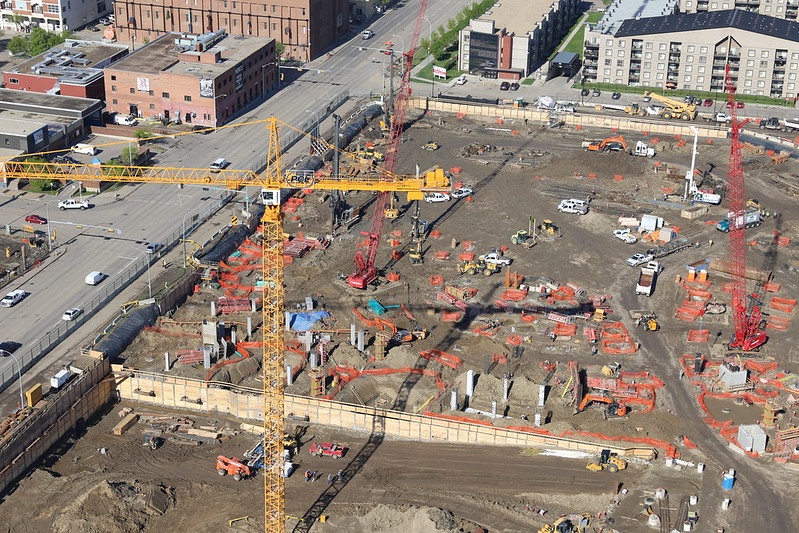
Image Credit: Mack Male (CC BY-SA 2.0)
The recent national anthem protests in the National Football League have brought the topic of federal subsidies being used to fund the construction of NFL stadiums to the surface. Since 1997, the National Football League has received $6.7 billion in taxpayer dollars to build ten new stadiums and renovate three others. Those number will exceed $7 billion with the completion of the Oakland Raiders new stadium in Las Vegas, Nevada in 2020. The $750 million tax subsidy needed to build the new Raiders stadium will be the largest taxpayer contribution in NFL history.
Thankfully, two of the most expensive NFL stadiums to build did not resort to public tax dollars; Metlife Stadium (home of the New York Jets and Giants) and the yet to be built stadium in Los Angeles (home of the Los Angeles Rams and Chargers). Owners of professional sports teams in general, will often extort city officials in exchange for public tax dollars to build new stadiums. What if cities don’t pony up the money? Then the owners move their teams to cities that will. Team owners always seem to over-exaggerate the economic impact that sports teams bring to their cities too. Professional sports teams often only provide economic impact to the neighborhood they play in; not the entire city. Situations like these are what recently led to St. Louis and San Diego losing their teams to other cities. The city of San Diego wanted more than $350 million from local taxpayers to build a new $1 billion stadium.
In addition to public money being used for the construction of these stadiums, cities are also giving land grants, using public dollars for game day operations and granting tax breaks to teams. In fact, President Trump has mentioned examining the tax breaks given to NFL teams as a result of the national anthem protests. Teams will often register their stadiums as government-owned to avoid property and income taxes.
Some of the largest taxpayer contributions for NFL stadiums in recent years were for US Bank Stadium (Minnesota Vikings), Paul Brown Stadium (Cincinnati Bengals), Mercedes-Benz Stadium (Atlanta Falcons), Lucas Oil Stadium (Indianapolis Colts) and AT&T Stadium (Dallas Cowboys). The other professional sporting leagues are guilty of similar practices as well. The Texas Rangers are requesting a stadium to be built to replace Globe Life Park in Arlington. Globe Life Park is only 23 years old.
Reference:
Related Articles
- NFL Pondering Sending Chargers Back to San Diego
- Cost of Personal Seat Licenses at new Rams Stadium in Los Angeles could set NFL Record
- Top 5 Best NFL Road Trips
- Emory University Study Ranks Best and Worst Fans in the NFL
- Most Expensive Naming Rights Deals for NFL Stadiums

